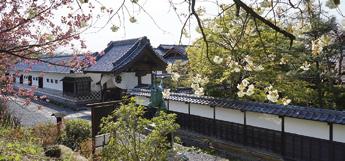
21 minute read
The “land of the last samurai”: Aizu The Hina dolls of SAMURAI 06
Aizuwakamatsu is a historic castle town in Fukushima-ken known as the “land of the last samurai”. It was the last bastion of the samurai during the Boshin Civil War of 1868 that pitted the Tokugawa Shogunate against the new Meiji government, whose aim was to make a new Japan focused on western principals - essentially a power struggle between feudal and modern Japan that became the major turning point in the history of the nation. The Aizu clan fought bravely including their defense of Tsuruga-jo Castle. But in the end, they were no match for the army of the Meiji government.

Advertisement
Aizu Matsuri Aizu Hanko Gyoretsu (Aizu Domain Lord's Procession)
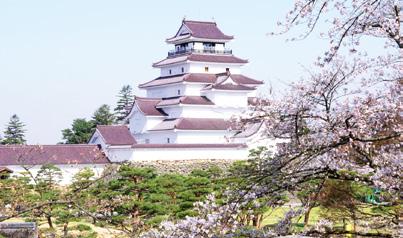

The Boshin Civil War marked one of the most tragic events in Aizu history known as the Byakkotai or the White Tiger Corps incident. A group of 20 teenage samurai of the reserve units of the Aizu clan committed seppuku, an honourable samurai suicide, when they mistakenly thought that their masters had been defeated by the Meiji army upon seeing their castle up in smoke. Regarded as the role models of bushido, the way of the samurai warrior, the graves of these samurai on Mt. Iimori continue to be visited by many till this day. To the samurai, Aizu was their final battlefield. Many lives had been lost, and through the reforms implemented by the Meiji government, all traces of these warriors gradually disappeared. Burnt down but reconstructed in 1965, Tsuruga-jo Castle is now a museum that aims to recover the history of the Boshin War and this lost samurai culture. SAMURAI CITY AIZUWAKAMATSU http://samurai-city.jp/en/ Tsuruga-jo Castle
The Aizu Bukeyashiki - Samurai Residence Aizu Clan School Nisshinkan Statue of the Byakkotai at Mt. Iimori
Yamagata
The Hina dolls of SAMURAI
Every year on 3rd March, Japan celebrates Hina-matsuri, also referred to as “Doll’s Day’ or “Girl’s Day”. Northwest of Japan lies Tsuruoka-shi, an important region during the Edo period due to the powerful Sakai family’s presence in the Shonai Domain back then. The former Sakai residence, now known as the Chido Museum, has been displaying Hina dolls owned by the Sakai family for more than a decade. It is the 18 th head of the Sakai Clan’s hope that visitors would be able to appreciate their traditions and love towards their daughters contained in these beautiful dolls. Tsuruoka City Official Website https://tsuruokacity.com/

Sakai family’s collection of Hina dolls

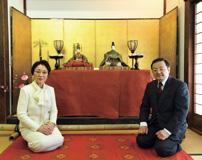
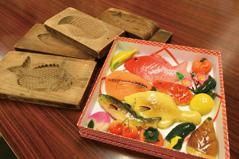
Japanese Sake Tours around Northern region: history of sake spirits
Vital elements to making great sake include fresh water, clean rice, appropriate fermentation starter and proper temperature. The Tohoku region, characterized by harsh winters, unpolluted water and dry air, is known across Japan forhaving the ideal sake-making conditions. Thanks to the dedication of toji (experienced brew masters), Tohoku sake has a time-honored place deep in the heart of sake enthusiasts. Several breweries offer tours from November to March ― the best season for sake brewing.
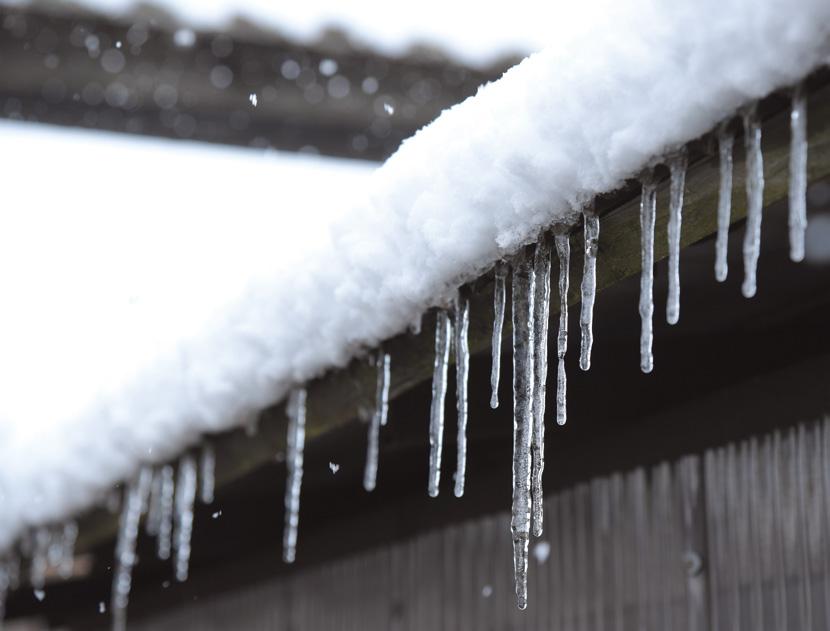
Nanbu Sake Masters and Sake Brewery
-Asabiraki Sake Brewery leading Japanese sake into a new age A Refreshing walk through Nataya-cho As a leading producer of the nation’s rice, Tohoku has many well-renowned breweries and sake brands. It is not only the region’s grain that makes a great brew though. Other ingredients like clear, mineral-rich spring water also play an important role in making a refreshing swig of sake. Two natural springs, Daiji-Shimizu and Seiryu-sui in Morioka’s Nataya-cho, is particularly favored among locals. It is common to see people in the area drinking and collecting crystal-clear water from the public spring. Like the water gently flowing through the area, Nataya-cho is best when explored at a slow, relaxing pace. Along the old merchant streets, you will find old traditional buildings, cozy cafes, impressive temples, and Asabiraki Brewery.

The history and culture of Japanese sake The method of brewing sake started back before even being recorded in history. Over the years, the Japanese liquor has been used in formal ceremonies, special events, and casual drinking parties, and it is considered the national beverage of Japan.
Much like other ancient Japanese practices, the gods were heavily involved. The god of sake is logically the same as the god of rice growing and harvesting. The drink became a major part of religious festivities, appearing in traditional dances and art in Japan and solidifying the importance of such activities. These days, sake is inseparable from the Japanese identity, much like shrine, samurai and sushi.
The Brewing Process Brewing sake is astoundingly complicated, especially considering how old the culture around the rice wine is. Of course, modern techniques are now used to enhance and mass produce the liquor with consistent quality, but the steps are largely the same as those established in ancient times. The major brewing method used in this area is the Nanbu style. This technique of brewing delicious sake was developed over 300 years ago and distributed by a group of experts called the Nanbu Toji.
Surprisingly, Japanese sake naturally has the highest alcohol content compared to other liquors. This is taking into account the multiple distillations that whisky and other go through to concentrate the alcohol content. The strength mostly comes from the kouji-kin, or spores, that is mixed with steamed rice. It is a distinctive feature of sake. There are of course many steps involved, but fermentation takes the longest time. The process is completed in three to four weeks, as the mixture is constantly monitored and stored at the optimal temperature.
Morioka Machiya Monogatari Museum in Nataya-cho
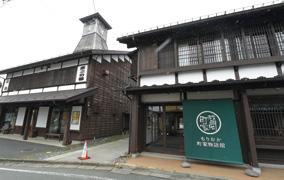

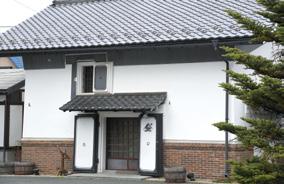
Asabiraki Sake Brewery
Asabiraki Sake Brewery leading Japanese sake into a new age You can learn more details about the sake production process by touring the pristine and modern Asabiraki Sake Brewery. Guided tours are available and easy to understand. It is amazing to see how much effort is involved in brewing the sake. With the amount of polished containers and shiny metallic equipment, the facility seems just as suitable for building rockets as it is for rice wine.
Asabiraki literally means “opening sun”, but they prefer to translate it as “new age”. From the spectacular view inside the brewery – especially the blinking buttons and switches in the control room – I would say that Asabiraki has successfully entered the new age of sake. The technology used is far from what the samurai who founded and led the brewery back in 1871. However, the crimson torii gates leading up to the building show that Asabiraki hasn’t forgotten its roots.

We had a chance to speak with the CEO of the brewery. It was clear how much passion he has for sake, as we walked over tea made from the same delicious spring water that goes into the brew. Asabiraki aims to spread the flavors and culture of sake around the world and welcomes foreign people to visit the brewery and learn about sake. Asabiraki produces many flavors, so it is hard to recommend any over the other, as it depends on the taste, unique to each individual. In fact, the brewery won gold at the National Sake Competition 12 times in a row. Asabiraki Sake Brewery 10-34 Daijiji-Cho Morioka-shi, Iwate
-Hirota Shuzoten and the Flavor of Tradition Hirota Shuzoten is a small brewery in Iwate-ken that has been producing clean-tasting, and, umami-infused sakes since 1903. Using local rice and clear water springing from their home town, Hirota stays true to its roots and family-oriented quality. While it does use modern methods, Hirota Sake Brewery contrasts greatly with those that are mass-produced in a industrial scale. Instead, at the brewery, an exceptional female brewer leads a select group of male brewers to blend such unique sake; the craftsmen and craftswomen at the humble brewery use the natural aspects of its region. As such, it uses natural elements such as the Tohoku region’s freezing cold temperature during winter to cool and produce its sake’s honest flavor. Somehow their hard work – lifting and stirring some hundred kilograms of rice every day – is also bottled up with the product and can be felt with each sip of their delicious sake. As a result, each brew is unique, like a work art that can only be experienced once, and that quality spreads all of Hirota’s products.
To learn more about traditional sake brewing processes founded by the Nanbu Toji, the expansive Nanbu-Toji Brewer Museum is nearby – a reminder of the passion the area has for sake. Replicating old Japanese rice wine brewery, wooden tubs and traditional architecture tell us the story of how sake was created and how it influenced Japanese culture. Complete with charming educational videos and priceless artifacts, there is a lot to explore. The museum is located at a michi no eki, or rest stop along the road, so there are many local sake brands and other items to purchase as a gift. Hirota Shuzoten 2-4 Izumiyashiki, Miyade, Shiwa-cho, Shiwa-gun, Iwate
Asabiraki Sake Brewery
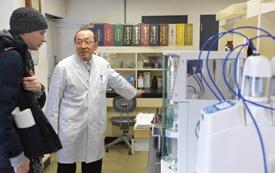

Hirota Shuzoten
Hanamaki Onsen, surrounded by Tohoku’s magnificent nature, is one of the best places in this region to soak after Sake brewery tour. Easily the largest spa resort in Tohoku, Hanamaki Onsen features about 500 rooms across all four of its charming hotels – Hotel Senshukaku, Hotel Koyokan, Hotel Hanamaki and Kashoen. Luxurious halls, traditional accommodations and elegant design bestows guests with a sense of grandness, even as they wander through the hotels in comfortable, loose-fitting Japanese yukata. Hanamaki Onsen: Soaking in the essence of Japan with Sake
Hanamaki Onsen offers variety baths including outside hot springs opening up to spectacular views of the surrounding nature in all its seasonal glory. Made from cypress and stone, the outdoor baths, or rotenburo, perfectly represent the Japanese aesthetic.
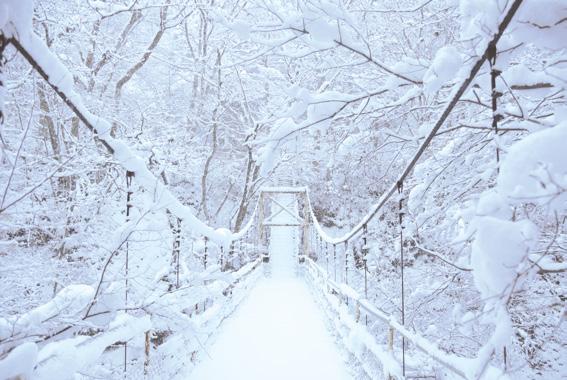
Hanamaki Onsen also ensures guests won’t be going on your next journey on an empty stomach. The resort’s buffet is truly astounding, using fresh seafood and vegetables to serve up the best of Tohoku’s local dishes. They also have a wide selection of local sake. Let’s enjoy the sake along with the delicious cuisines!

There are many types of Sake with Local Feature


Yamagata -Dewazakura Sake Brewery and DEWAZAKURA ART MUSEUM Dewazakura Sake Brewery is a fantastic place to be if you’re a sake lover. The brewery, based in Tendo-shi in Yamagata-ken, proved itself worthy of global praise by winning the numerous top prize in its category at the International Wine Challenge, one of the world’s largest wine competitions. In 1988, the brewery opened the doors to the DEWAZAKURA ART MUSEUM, a collection of traditional ceramics, crafts and calligraphy. The museum building is a traditional Japanese house built in the Meiji period (1868–1912) and the former residence of the last president of Dewazakura Sake Brewery. DEWAZAKURA SAKE BREWERY & DEWAZAKURA ART MUSEUM 1-4, Hitoichimachi, Tendo-shi, Yamagata

DEWAZAKURA ART MUSEUM
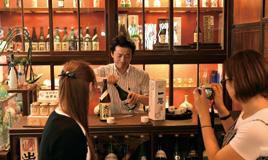


Miyagi -Urakasumi Sake Brewery Founded in 1724, this brewery has been tickling the taste buds of sake connoisseurs for nearly 300 years in Siogama-shi. Since then it has been providing the sacred sake for the thousand-year-old Shiogama Shrine, one of the most important shinto shrines in northern Japan. The establishment offers a wide range of products, including classic sakes, seasonal specialties, Japanese Plum sake and tasting accessories. Visitors can also enjoy a tour of the brewery, which is followed by a fascinating tutored tasting session. Urakasumi Sake Brewery 2-19-Motomachi, Shiogama-shi, Miyagi


Sugidama (cedar ball), which signals that new sake has been made

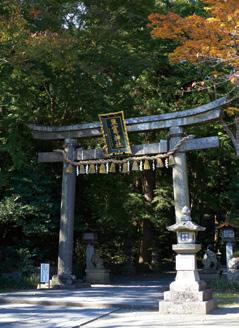
Shiogama Shrine

Niigata -Asahi Shuzo Sake Brewery

The third largest sake producing region in Japan, Niigata is practically overflowing with the characteristically Niigatan dry and pristine sake from its about 90 breweries. One of its most notable sake breweries is the massive Asahi facility in Nagaoka-shi. Quality is no afterthought at Asahi with its labels, bottles and containers tastefully designed to celebrate their amazing contents. Asahi’s modern facility is a work of art, but the real magic comes from their careful brewing methods and understanding of Niigata’s many kinds of rice. Asahi Shuzo Sake Brewery 880-1 Asahi, Nagaoka-shi, Niigata
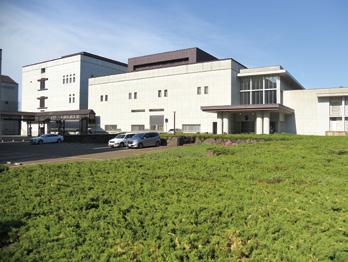

With all its gods, shrines and temples, religion in Japan seems incredibly complicated. However, Japanese spirituality’s main concern of living in harmony with nature and all creatures that share our world isn’t a concept all too unrelatable. Tohoku is home to many cultural, religious practices and sacred areas like Osorezan, where it is even possible to reconnect with the dead.
Unchanging Beliefs in the Northernmost region
Aomori
Osorezan: The land of the departed Aomori sits on the northernmost part of the main Honshu Island. Its location and size make it a perfect home for Japan’s dramatic seasons and a variety of landscapes. One example is Osorezan, or Dread Mountain.
Osorezan’s hellish landscape is covered in ashy grays from volcanic activity. The sulfur permitting through the area gives Lake Usori a vivid blue tint, nicely providing contrast to the harsh, dreary surroundings. Rocky trails lead visitors around Osorezan’s otherworldly geography as cracks spew steam and bubbling water out onto the jagged, lifeless earth. Despite all of the rough edges, Dread Mountain is still strangely beautiful.

Osorezan, one of Japan’s three most sacred mountains, was discovered by a Buddhist priest over 1,000 years ago in a search for sacred areas around Japan. It was chosen as a special place as the bridge between the living and the dead because the mountain has features that resemble both the Buddhist hell and paradise. Osorezan Bodaiji Temple was founded in 862 and is now occupied by priests of the Soto-sect of Buddhism, but people of all religions can come here to pray and witness the striking scenery.
Occasionally, the pale backdrop is lifted by vibrantly colored pinwheels and other gifts presented to Osorezan’s many red-capped Jizo statues that are peppered throughout the area. These chubby-cheeked characters are believed to be the guardian of children. From July 20 to 24, the annual Bodaiji festival takes place at Osorezan. It is a large festival where a memorial service is held for those who have passed away. In this place, souls of those who have passed can be contacted by Itako, women who have spent years studying and training in spirituality. Three months before the Bodaiji festival, the Itako perform kuchiyose (mouth spiritualism for communication with the spirit) for reconnecting people with the dead.
Osorezan monk Minami Jikisai explained that the unreal landscape makes the mountain uniquely suitable for such spirituality, as

Gokurakuhama, which means “sacred beach” on the shores of Lake Usori.
hallowed grounds should always feel separate from the world inhabited by our daily lives. Away from the usual trouble and surroundings, connection with your spirituality and emotions comes naturally. It is not uncommon to hear people calling out the names of their lost loved ones around Osorezan. To be clear, visitors to Osorezan are not calling out to “ghost”, but the “departed”. The departed still exists, just in a different way from the living. They are very much alive because the living still care for them.
Life and death are two sides of the same coin. To be “living” also means to be “dying”. Living is an expression of death because death is a part of everything that is alive. This is likely something people sense when they take in the scenery at Osorezan. Osorezan Bodaiji Temple: 3-2 Usoriyama, Tanabu, Mutsu-shi, Aomori
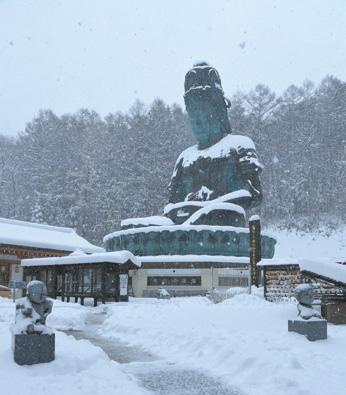
The Showa Daibutsu in Seiryuji Temple: Learning spirituality at Tohoku’s largest Buddha statue Aomori is blessed by the presence of Japan’s largest seated bronze Buddha statue. At 21.35 meters, it is even taller than Nara’s famous Great Buddha. As I approached the giant statue resting in its eternal pose, the Showa Daibutsu emerged gently from the snowy haze as if it had been waiting there patiently for hundreds of years, but actually the monument wasn’t built until 1984 in Showa period. Inside the statue, there are many paintings and Buddhist proverbs to lift your spirit and teach you about one of Japan’s two major religions.

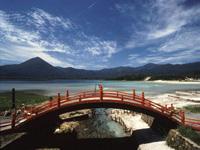


Seiryuji Temple was founded by the priest Oda Ryuko in 1982 and also has a five-story pagoda made totally from Aomori Hiba (white cedar). It is the fourth tallest pagoda in japan. The priest’s belief is “A temple itself preaches to us in a silent manner”. In fact, the grounds are pristinely maintained to reflect the beauty of Japanese Buddhism. At the temple you can try sutra copying and Zen meditation in the morning, for a real, unforgettable Japanese experience. Seiryuji Temple: 45 Aza-yamazaki, Oaza-kuwabara, Aomori-shi


The Spirituality of Mt. Hayachine Hanamaki-shi, in the center of Iwate-ken, is characterized by its stunning nature, including jaw-dropping mountain ranges, rivers and lakes. In the winter, it is common for snow to gently fall in the sunshine, creating a dreamlike environment as the sky glitters with delicate, sparkling snowflakes. Particularly beautiful is Kitakami Range’s highest peak, Mt. Hayachine. Surrounded by majestic mountain landscapes, it’s innate spirituality has a powerful presence throughout the region.
Mt. Hayachine towers over the region, reaching a height of 1,917 meters. In ancient times, Iwate’s beloved mountain was known as Azumane-dake had a major influence on the culture of the region. Legends say that the mountain was discovered by a man in the year 807 named Tanaka Hyoubu, who reached the mountaintop while following a fable white deer with a golden star-shaped mark on its head. The rugged mountain landscape is home to many alpine flowers which inspired many old poems and literature, and is considered a holy place. Looking out over the breathtaking scenery, it is easy to understand how the mountains became a source of such culture and spirituality, as the view emits waves of awe-inducing beauty. In fact, in Japanese religion, mountains are considered gods, as the mist and cloud formations makes them seem like they are living and breathing.
Hayachine Shrine gives tribute to the god that is believed to reside within Mt.Hayachine. Long ago the people gave thanks to the water that flowed from the mountain allowing them to farm. They believed that when you die, your spirit would go to the mountain. This mountain worship helped create the mysterious folklore cultural. Hayachine Shrine: 1-1 Uchikawame, Ohasama-machi, Hanamaki-shi, Iwate
Mt. Hayachine

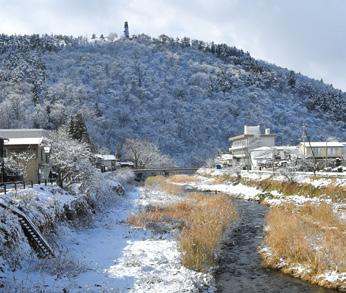
The observatory shaped like “Gongen Sama” god on the top of the hill in Ohasama-machi
Dancing with the Gods: Hayachine Kagura Hayachine Kagura is traditional folk performance that features a series of 40 masked performances with live music that originated from Mt. Hayachine that has been handed down through generations in the Uchikawame area of Hanamaki Ohasama. It is now a designated UNESCO intangible cultural heritage and has a history of over 500 years. Actually, the Hayachine Kagura refers to two kinds of Kagura, or schools – the Take Kagura, dedicated to the Hayachine Shrine, and the Otsugunai Kagura, dedicated to the Otsugunai Shrine.

In traditional Hayachine Kagura, men perform all roles. The dancers wear costumes or Isho. The male god characters are dressed in Japanese hakama (pants) and chihaya, an upper garment with large, flowing sleaves. Female gods wear chihaya and kimono. For wilder dances that require a lot of aggressive movements dancers wear a sash with leggings. Obviously, the colorful costumes of Hayachine are an important part of the dance. Masks or omen are worn during many of Hayachine Kagura dances. The ones that include omen are special because the artifacts are said to channel the gods, and the performers enter a state called “neri”. The Kagura are said to be choreographed adaptations of prayers of the ancient priests who worshiped at Mt. Hayachine, so the performances are meant as an offering to the gods rather than entertainment.
Surprisingly, the performers are local people who have a passion for culture and history. Their presence has a real impact and adds character to the important cultural dance in the Tohoku region. Though Hayachine Kagura is only performed during certain parts of the year, it can still be appreciated at the beautiful and informative Hanamaki Cultural Heritage Center, which displays many masks and replicas like the legendary lion head that is featured in many of the dances. Hanamaki Cultural Heritage Center: 3-39-1 Ohasama, Ohasama-machi, Hanamaki-shi, Iwate


Sado island and the people’s Noh Hayachine Kagura had a powerful influence on Japanese Noh, a classic form of Japanese dance. Noh theatre rose to popularity during the Edo period (1603-1867). In its prime, Sado Island had up to 200 functioning Noh theatres where many people could perform or be entertained. Zeami is given credit for perfecting the art, and Sado, where he spent many years in exile, still carries on his legacy. The performances in Sado became known as “the people’s Noh”, and many locals and influential residents participated in the festivities. To show appreciation for Zeami, firelight Noh is held in his honour. Shiizaki Suwa Shrine Noh Stage: 24 Harakuro, Sado-shi, Niigata
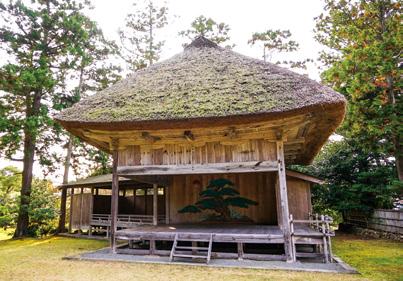
Noh stage of Daizen shrine
Firelight Noh Rocky shores in Sado island

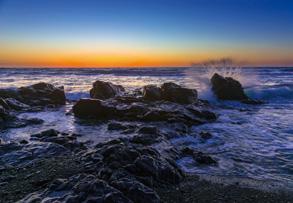

Akita
Meet the Folk Ritual “Namahage”, Demon -like Deity The Oga peninsula in Akita-ken, projecting west into the Sea of Japan, is home to the Namahage ogres (demon-like characters) in traditional Japanese folklore. Every year on December 31st, locals wrapped in knitted straw known as kede put on fearsome masks unique to their district and walk lifting their legs high (similar to wrestlers before a match) around neighbourhoods and visit homes, warning delinquent teenagers and young children to work hard, to study and to listen to their parents.

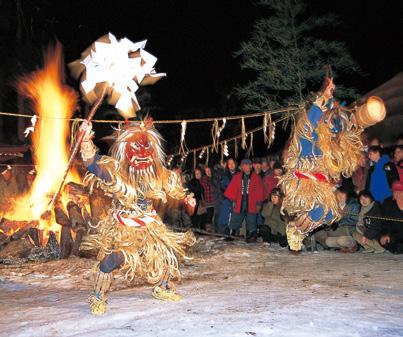

With information quickly spreading in recent years, the unique culture of Namahage has gained attention within the traditional folk rituals. By combining the Namahage event and the Saitou-sai (Festvial) which boasts a history of about 900 years at Shinzan Shrine, the locals have created Oga’s Winter Festival, also known as Namahage Sedo Festival. Every year, the event is held on the second Friday, Saturday and Sunday of February, satisfying the tourist’s curiosity about the Namahage culture. Namahage Museum: Kitaura Shinzan, Aza-Mizukuisawa, Oga-shi, Akita






